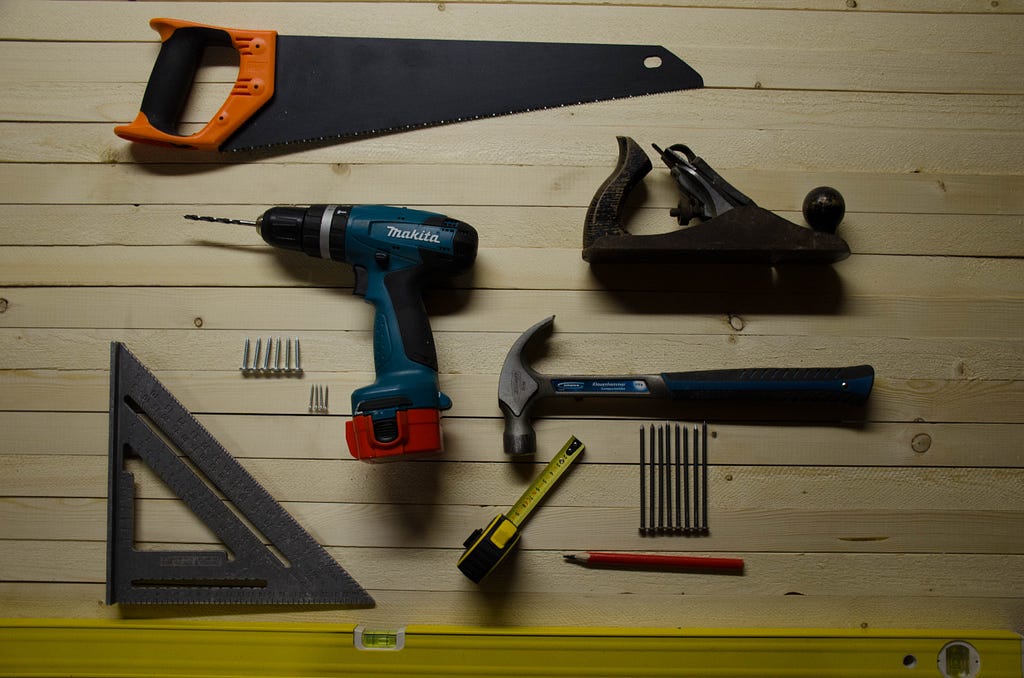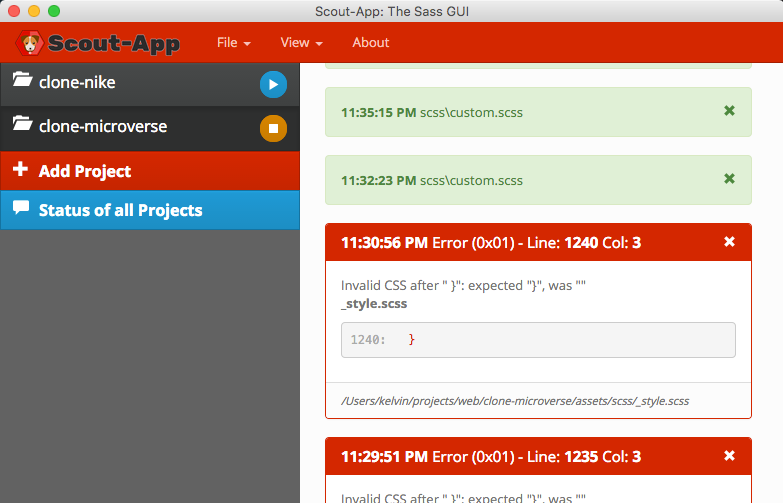Latest news about Bitcoin and all cryptocurrencies. Your daily crypto news habit.

I am a junior web developer recently learned Bootstrap 4 and try to explore the possibility of the framework in a real world frontend project.
Before Start …
To tell the possibility, I decided to do a real-world project with Bootstrap 4 to get the experiences.
I choose to clone the website of an Online Coding School (Microverse.org) I am attending to for this project, because:
- It is a Single Page Application which is common for today’s job market.
- It has about 7 ~ 8 sections to introduce its features and services which make it complicated enough compared to other real-world projects.
- It uses #Bootstrap4 and custom CSS for its fronted decoration, which is exactly what I am looking for.
- I didn’t build the website from scratch, but I tried not to get any help from the school or any other people to ensure that is how I will work in the real world project.
I finished this project in about a month, but I was doing a few other projects and studying during the period, so the total hours I spent on this project are about 30 ~ 40 hours.
The final project is not completely identical to the original one (and I am not intend to), you can see it from this link.
Below are how I have accomplished this project and what conclusion I came out of it.
Let’s start => First Part — Project Setup
At first, I go to GetBootstrap.com to download the latest version of Bootstrap Source Files. (It is V.4.2.1), unzip it, and I saw the following files inside the folder. (There are many sub-folders and files I have omitted).
bootstrap-4.2.1 tree -L 2 . ├── CNAME ├── CODE_OF_CONDUCT.md ├── ... ├── build │ ├── banner.js │ ├── ... │ └── vnu-jar.js ├── composer.json ├── dist │ ├── css │ └── js ├── js │ ├── dist │ ├── src │ └── tests ├── nuget ├── package-lock.json ├── package.js ├── package.json ├── scss │ ├── _alert.scss │ ├── _badge.scss │ ├── _breadcrumb.scss │ ├── _button-group.scss │ ├── ... └── site ├── _data ├── ... └── sw.js
17 directories, 67 files
For my purpose, I only focus on one major folder — ./scss, because I will compile my own version of CSS through Sass. I copied the entire ./scss folder to my project folder, below are my project folder structure.
➜ clone-microverse git:(development) tree.├── [1.0K] LICENSE├── [ 736] README.md├── [ 224] assets│ ├── [ 128] bootstrap│ │ └── [1.4K] scss│ │ ├── [1.1K] _alert.scss│ │ ├── [1.0K] _badge.scss│ │ ├── [1.2K] ...│ │ ├── [ 920] bootstrap.scss│ │ ├── [1.0K] mixins│ │ └── [ 576] utilities│ ├── [ 128] css│ │ ├── [438K] custom.css│ │ └── [452K] custom.map│ ├── [2.0K] images│ │ ├── [9.8K] 1-r-kn-gdqsl-5-lie-3-l-r-7-j-n-0-a-zq-2-x.png│ │ ├── [9.5K] 2000-px-stack-overflow-logo-svg.png│ │ ├── ...│ └── [ 128] scss│ ├── [ 27K] _style.scss│ └── [1.2K] custom.scss└── [ 48K] index.html7 directories, 47 files
There are 2 /scss folders in this project, one is ./asset/bootstrap/scss (from Bootstrap source files) and another one is ./asset/scss (for me to write customized code inside), and the output folder is ./asset/css (Where my HTML will refer link to).
For Sass compiler, I use Scout-App to help, it is a Sass GUI so it is very straightforward and easy to set up.
Once I finish the project setup, I start my coding in HTML & Sass files.
Second Part => Coding … (the hardest part)
Base on Bootstrap Official Documentation, I created a custom.scss file to add my customized elements and bootstrap base file together.
// Custom.scss// Option A: Include all of Bootstrap
/* -------begin customization-------- */
$theme-colors: (primary: #6f23ff,secondary: #ffd540);
:root { --dusk: #3e396b; --very-light-blue: #f8faff; --purplish-blue: rgb(111, 35, 255); --tealish: rgb(65, 211, 189); --light-tan: #f9f1ae;--padding-sm: calc((100vw - 540px) / 2); --padding-md: calc((100vw - 720px) / 2); --padding-lg: calc((100vw - 960px) / 2); --padding-xl: calc((100vw - 1140px) / 2);
--oPadding: calc(0.16 * 100vw); --oHeight: calc(0.16 * (100vw - var(--padding-xl))); --oHalfHeight: calc(0.16 * (50vw -var(--padding-xl)));}
/* -------end customization-------- */
/* import Bootstrap to set the changes! */
@import "../bootstrap/scss/bootstrap.scss";
/* ----------- custom font import ------------ */
@import url("https://fonts.googleapis.com/css?family=Domine:400,700|Maven+Pro:400,500,700,900|Montserrat:400,500,600,700,900&display=swap");/* ------------ Self-styling -------------- */
@import "./style";
I used “Option A” — to include all the bootstrap components in this project, put all self-styling customization into a separated file ./style.scss, Sass will compile all sass files into one big giant CSS output to ./asset/css/custom.css, which I refer it back in my index.html file.
<!DOCTYPE html><html lang="en"> <head> <meta charset="UTF-8" /> <meta name="viewport" content="width=device-width, initial-scale=1.0" /> <meta http-equiv="X-UA-Compatible" content="ie=edge" /> <link rel="stylesheet" href="./assets/css/custom.css" type="text/css" /> <title>clone-Microverse - Online Coding School</title> </head>
So far all the steps above are very clear and easy to follow ( I finish them in about an hour), but what coming in next is out of my calculation.
I spent the first few hours trying to re-create the navigation bar and landing page by myself. The more I tried, the more I found it is hard and complex. I tried to utilize more bootstrap 4 classes and less customize CSS, but it seemed impossible.
The original website looks pretty slick and stylish, isn’t it? Yes, but the price is very specified and complex frontend code.
I finally gave it up and try to look at the original website’s code to see how they actually come together, the result is shocking — there are more stacks or layers to make up one component than I originally thought, there are more custom CSS than use Bootstrap 4 class directly, they intend to use more #id rather than class for specificity of CSS style. Below are a peek on the code -
# Index.html<div id="homepage" class="row bg-primary"> <div class="content"> <div id="homepage-navbar-container" class="container-fluid p-0"> <nav id="homepage-navbar" class="navbar navbar-expand-lg w-100"> <div class="container"> <a href="#" class="navbar-band logo">microverse</a> .... <div id="navbarToggler" class="collapse navbar-collapse w-100 align-items-baseline"> <ul class="nav navbar-nav w-100 justify-content-end"> <li class="nav-item pr-3"> <a class="nav-link font-weight-bold text-white text-capitalize" href="#" >curriculum</a > </li>
\\ _style.scss#homepage-header { margin-top: 163px; position: relative; z-index: 105; .head-line { font-family: "Domine", serif; font-size: 3rem; font-weight: bold; line-height: 1.27; } .head-text { font-size: 1.25rem; line-height: 1.65; margin-top: 15px; margin-right: 30px; color: #fff; }Because of these complexities, I spent almost one month to finish all the coding, there are some on and off time and I just do this project on my spare time, but it still overly difficult than most of the frontend project I have done before. The final finished index.html file has 1204 lines, _style.scss file has 1512 lines,
├── [1.0K] LICENSE├── [ 736] README.md├── [ 224] assets│ ├── [ 128] bootstrap│ │ └── [1.4K] scss│ ├── [ 128] css│ │ ├── [437K] custom.css│ │ └── [451K] custom.map│ └── [ 128] scss│ ├── [ 27K] _style.scss│ └── [1.1K] custom.scss└── [ 48K] index.html
Finally, You can check out all the code in here. I have clone about 95% of the code from the original website, but it still took me many hours to accomplish it. I can’t image how much hours I have to spend if I need to do this project from scratch.
Lesson Learn & Conclusion …
At first, after finishing this project, I think I can answer the question I raise at the beginning now — How much Bootstrap 4 Can help for a real-world project?
- A short answer is — “Not much”
- A longer answer is — “It help on its grid system and some spacing utilities, but the project still needs a lot of customizing CSS to help make the website look unique and outstanding.”
- An even longer answer is — “Bootstrap framework help provide a solid foundation for the project, it contributed about 20 ~ 30 % of the code base, but a real-world project needs more unique design and differentiation, imaginations and creativities are needed as a Frontend Developer!”
Second, below are some lesson learned I got from this project -
- A Real-world FrontEnd Project is usually complex and challenging. (It will be much more complex than the projects in Odin project or any other online learning platforms).
- A Frontend framework such as Bootstrap 4 might help, but diligentness and creativities are still the main contributors.
- Frontend development mainly involves repetitive coding and being requested to update frequently, make sure I like this kind of working style before I jump in.
- There are still much more to learn about SASS, CSS & HTML.
Finally, due to the limitation of my knowledge and resources, I might do this project in a completely wrong way or an immature way, hence I got a completely wrong answer from it. But so what? I did it and write about it anyway, I definitely learn a lot from it.
There are free resource can help customize Bootstrap 4 theme too, but they seem no fit for this project, so I might try them in the next project.
I will do it again if there is a question I can’t get the answer from google or any other sources, I think that is how a self-taught programmer learn to evolve in today’s environment.
PS: I am open to your critiques and suggestion for this project, thanks again for reading this whole story.
Can Bootstrap 4 Clone Entire Websites? was originally published in HackerNoon.com on Medium, where people are continuing the conversation by highlighting and responding to this story.
Disclaimer
The views and opinions expressed in this article are solely those of the authors and do not reflect the views of Bitcoin Insider. Every investment and trading move involves risk - this is especially true for cryptocurrencies given their volatility. We strongly advise our readers to conduct their own research when making a decision.


